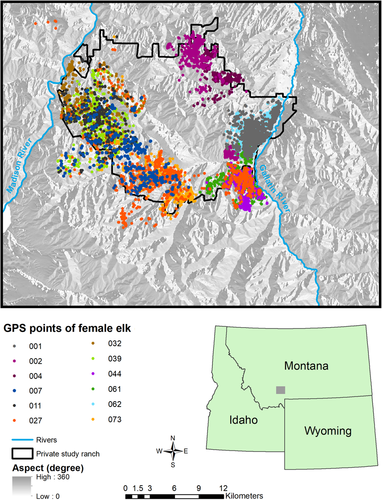
BLACKBURN, RYAN, YANG – Sex-Specific Elk Resource Selection during the Anthrax Risk Period
Anni Yang, Kelly M. Proffitt, Valpa Asher, Sadie J. Ryan, Jason K. Blackburn
Article first published online: 01 OCT 2020 The Journal of Wildlife Management
DOI: 10.1002/jwmg.21952
ABSTRACT: Anthrax, caused by the spore-forming bacterium Bacillus anthracis, is a zoonosis affecting animals and humans globally. In the United States, anthrax outbreaks occur in wildlife and livestock, with frequent outbreaks in native and exotic wildlife species in Texas, livestock outbreaks in the Dakotas, and sporadic mixed outbreaks in Montana. Understanding where pathogen and host habitat selection overlap is essential for anthrax management. Resource selection and habitat use of ungulates may be sex-specific and lead to differential anthrax exposure risks across the landscape for males and females. We evaluated female elk (Cervus canadensis) resource selection in the same study areas as male elk in a previous anthrax risk study to identify risk of anthrax transmission to females and compare transmission risk between females and males. We developed a generalized linear mixed-effect model to estimate resource selection for female elk in southwest Montana during the June to August anthrax transmission risk period. We then predicted habitat selection of female and male elk across the study area and compared selection with the distribution of anthrax risk to identify spatial distributions of potential anthrax exposure for the male and female elk. Female and male elk selected different resources during the anthrax risk period, which resulted in different anthrax exposure areas for females and males. The sex-specific resource selection and habitat use could infer different areas of risk for anthrax transmission, which can improve anthrax and wildlife management and have important public health and economic implications.
Read the full publication at The Journal of Wildlife Management